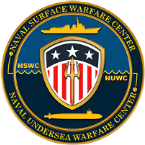
lightweight solutions
MK12 Poly Plug Production For US NAVY
Delivering A Reliable Component For One Of The U.S. Navy’s Critical Ammunition Systems
URGENT NEED FROM THE NAVY
MK12 Poly Plugs are one of the four components necessary for the MK200 ammunition round, along with a steel cartridge case, primer, and propellant. These rounds are used by the 5” guns, which are the main firepower for most Navy frigates.
In 2012, the Navy was running low on inventory of MK12 Poly Plugs, which they had stockpiled years ago, and urgently needed to produce more. However, no other vendor had the process knowledge to produce more Mk12 plugs. Moreover, their data package was out of date, and they needed a contractor to assist them in rebuilding the entire manufacturing system.
In addition to the MK12 plug shortage, the existing MK12 plugs had technical deficiencies that needed to be improved. Typically, the 5” guns are located on the ship’s deck, but the ammunition and projectiles are loaded 2 or 3 floors below deck. During normal operation of the 5” gun, the ammunition and projectiles are loaded and mechanically lifted into position at the gun barrel for firing. If the round is not fired, the projectile and ammunition must be unloaded.
During the high-speed hoist and ram process of unloading, the heavy projectile round often hits the corner of the MK12 plugs. Occasionally, the ramming force caused damage to the corner of the MK12 plug and caused chipping. The accumulation of the damaged pieces from the MK12 plug would eventually block the movement of the lifting mechanism and result in the malfunction of the gun, which occurred several times in the past. Opening the gun system and removing the plastic foam chips is a time-consuming repair process. The Navy wanted new MK12 Poly Plugs to be more resistant to damage from the hoist and ram process on the gun and to make the crucial weapon more reliable.
The Navy also needed MK27 Cleaning Plugs for the 5” gun. The function of the MK27 is to clean the gun barrel if there are too many deposits from the incompletely burned propellants. Again, the Navy had not produced the MK27 plugs for years; they were short of inventory at the time, and they needed to redevelop the data package and produce more MK27 plugs to meet their needs.
DEVELOPED AND FIELDED WITHIN 12 MONTHS
Having previously worked with FPPD in the late 2000s, the Navy’s Project Manager reached out in 2011 and invited FPPD to develop the MK12 Poly Plugs and MK27 Cleaning Plugs. A development contract was promptly awarded in 2012. Due to the urgency of the project, a team of Naval Surface Warfare Center engineers from the Indian Head and Picatinny Detachment Branch actively collaborated with FPPD and provided support in the effort to field the new MK12 and MK27 plugs as soon as possible.
After testing over 40 formulations and working with numerous polyurethane foam suppliers, FPPD selected one of the vendors to modify a formulation to meet the desired performance needs. FPPD also built one set of prototype molds and developed a manual foam mixing and casting process to produce the prototype plugs for testing. Since MK12 plugs need a Kevlar sleeve composite to provide structural reinforcement, FPPD had to locate a vendor to manufacture the Kevlar sleeves, then research and select the thermoset resin, and develop a manufacturing process to produce the Kevlar sleeve composite. Within 8 months, with all the ingredients, components, and manufacturing processes developed from scratch, the newly developed prototype MK12 plugs were ready for testing.
Since the Navy wanted the new MK12 plugs to withstand potential damage from the hoist and ram process, FPPD developed a novel corner impact testing technique to simulate the impact behaviors of the actual hoist and ram process in the 5” gun. This technique allowed FPPD to fine-tune the polyurethane resin formulations and manufacturing processes. The Navy was impressed with FPPD’s corner impact testing design and wanted to implement a simulated hoist and ram testing protocol for future lot qualifications. Before that, the Navy conducted actual hoist and ram testing on the 5” gun in their Indian Head to qualify any production lots of MK12 plugs, which was time-consuming and expensive. The Navy subsequently developed a more sophisticated corner impact testing setup using FPPD’s testing fixture, and this simulated hoist and ram testing protocol was incorporated into the specification for all future lot qualifications.
Within 12 months, FPPD successfully developed a new manufacturing process and resin compositions that met all performance requirements. In addition, the Mk12 Plugs successfully passed actual hoist and ram testing and extensive test firing on the loaded MK200 ammunition using an actual 5” gun in the Navy’s test range. After the successful demonstration of the prototype MK12 Poly Plugs, the Navy provided funding to build a production line in 2013, and FPPD successfully developed a production process to supply sufficient annual quantities to meet the Navy’s needs. Subsequently, FPPD was awarded the first production contract and has been producing the MK12 Poly Plugs for the Navy since then. FPPD also worked closely with the Navy’s Quality Assurance Representative (QAR) to develop a stringent quality control system. Over the past ten years, FPPD has never failed any government lot inspections or received any complaints about any field failure from the Navy.
FPPD developed the new MK27 Cleaning Plugs within six months and delivered one lot of MK27 plugs to the Navy. Since the consumption of the MK27 plugs is low (it is only needed when the 5” guns need to be cleaned), the Navy has not ordered another lot yet.















